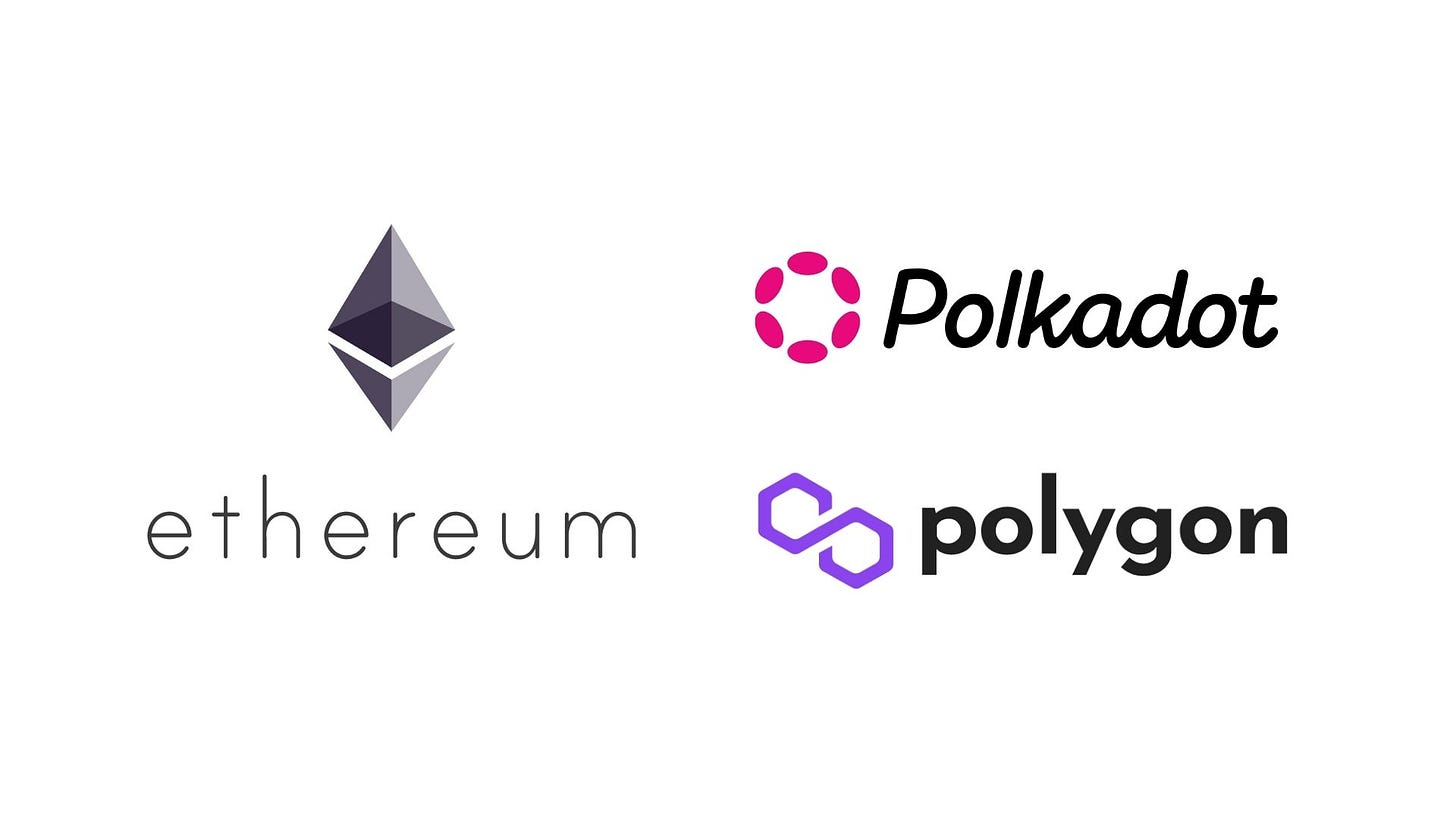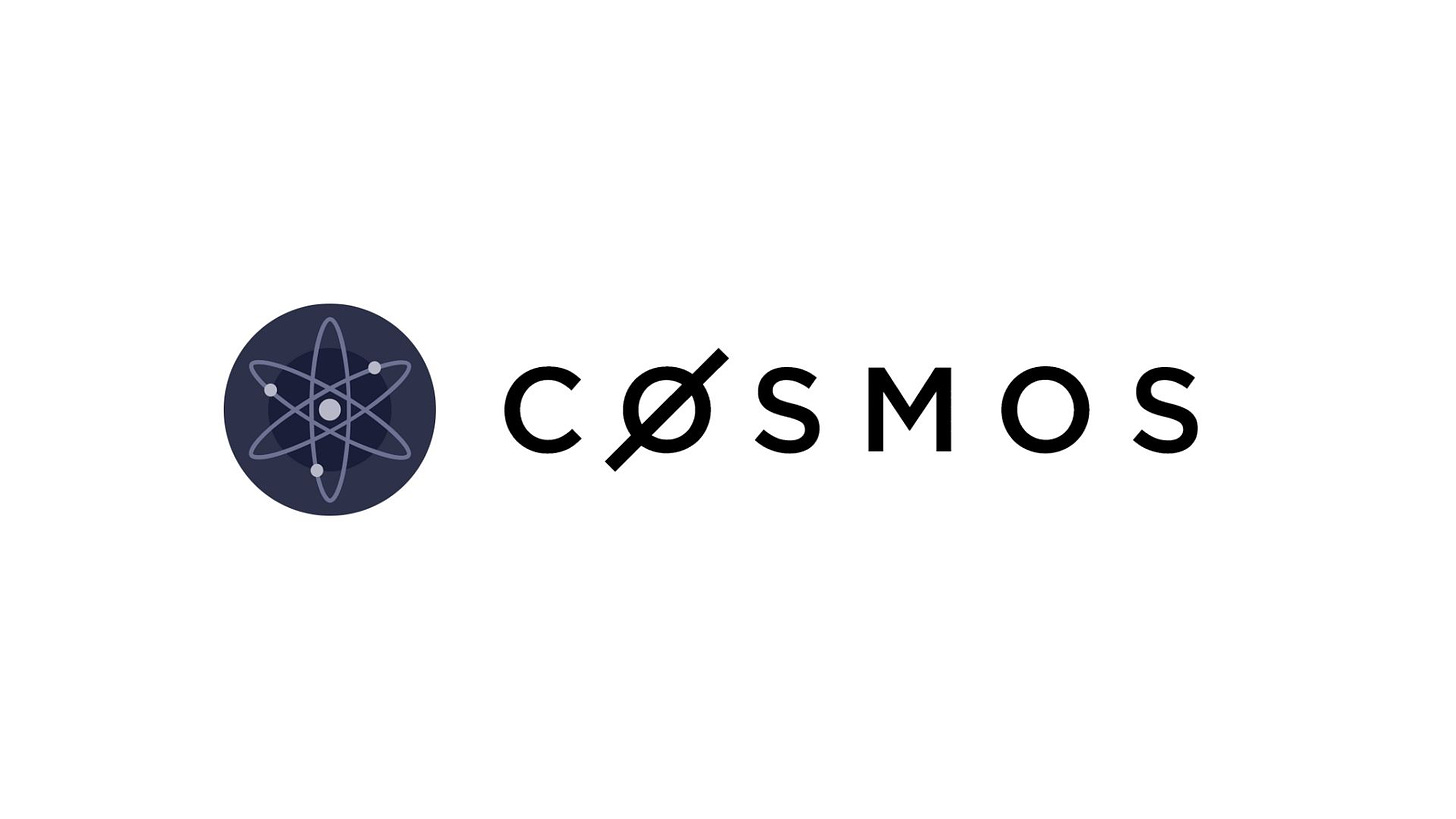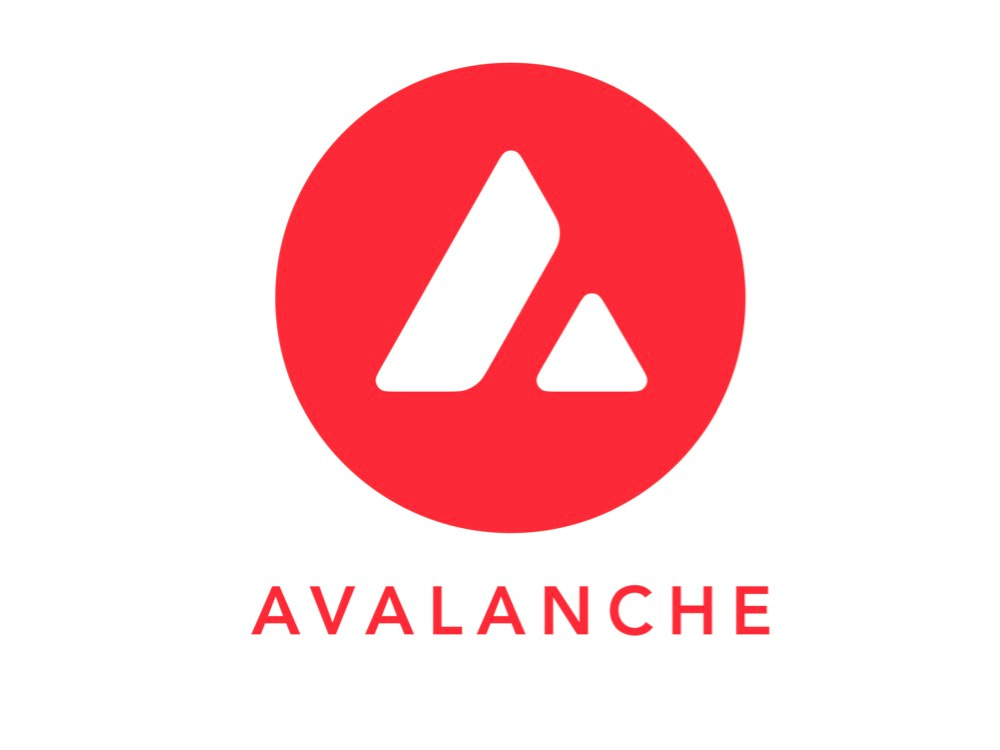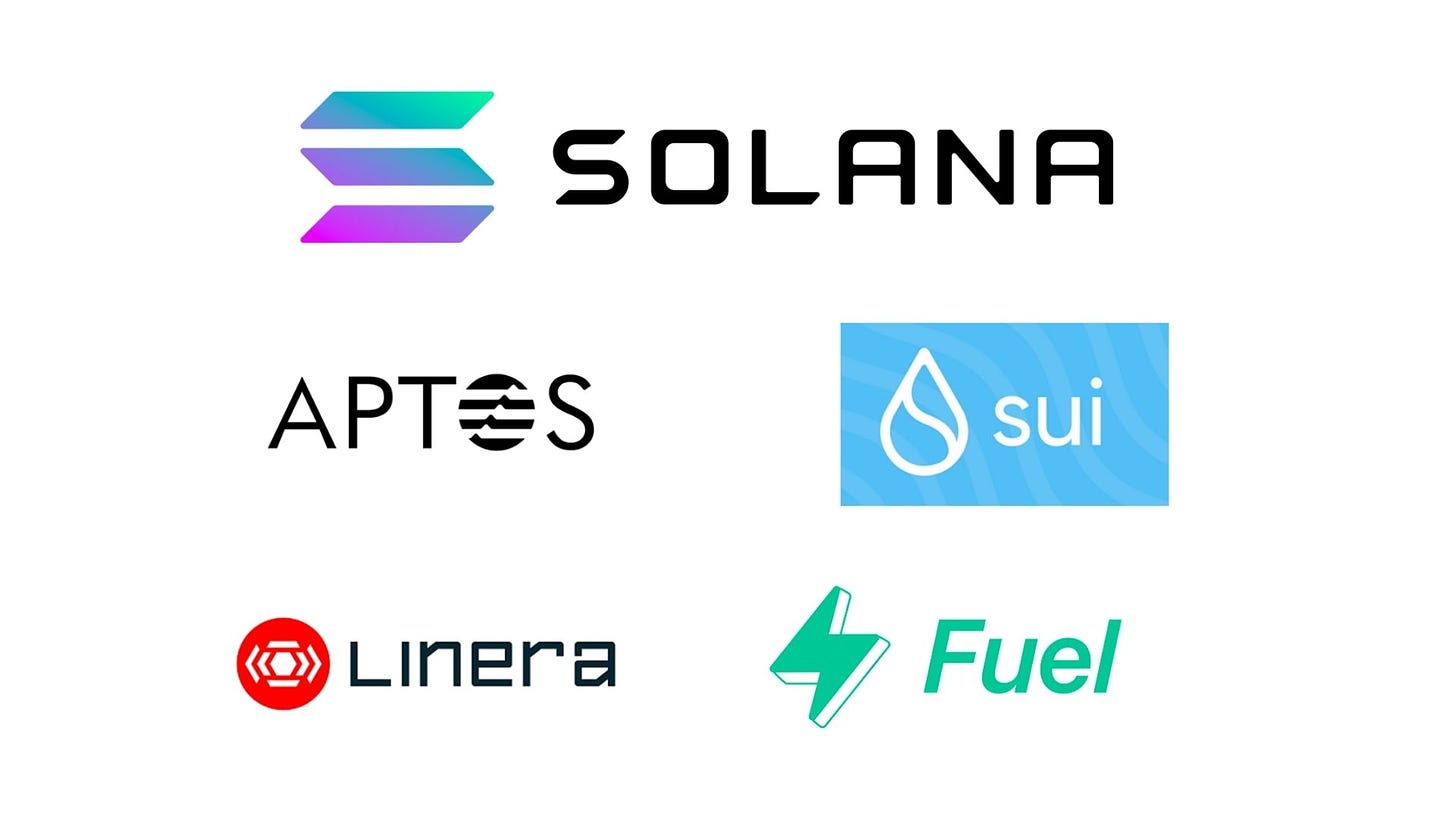Original Author: Maco
foreword

foreword
Based on the previous articleReport on the comparison of second-tier public chains, combined withThe latest Delphi milk article, recently had new thinking on the new round of public chain competition. The comparison summary of the last pass data (excluding cosmos/dot) is as follows:
Comprehensive public chain and ecology: Sol > Avalanche > Near > Bsc > Polygon > Ftm
This time, we only compare the structure, adding ETH/Cosmos/Dot, the views are basically the same as last time
In terms of architecture, the current mainstream public chains are divided into three categories:multi-chain
multi-chain
Take horizontal or vertical expansion, another difference is whether to share state, security and freedom of tradeoff
Eth:L1 + L2
Advantages: the originator of the smart contract platform; the safest chain; the most innovations and real users, currently ranked first, no suspense
Disadvantages: Expensive, slow, old structure, big ship and difficult to turn around
Dot: Relay + Parallel
Advantages: more advanced architecture (xcmp, wasm); awesome gavin wood; security; theoretically suitable for "lazy teams", no need to worry about chain design (security & economic model)
Disadvantages: The fee model puts a lot of pressure on "lazy teams"; the ecology has just started
Cosmos:hub + zone
Advantages: more advanced architecture (Ibc, CosmosSDK); in line with the free and open spirit of web3; the project party can make full use of the performance of the chain to do customized design (security & economic model)
Disadvantages: loose organizational structure and insufficient empowerment; everything needs to be designed by oneself, and the development threshold is high; the ecology has just started
Avax: main network + subnet
Advantages: more money; integrated architecture (new consensus + overlapping verification network); seize the opportunity of EVM; comprehensive ecology
Disadvantages: There is no interaction between subnets; new gadgets do not have enough consensus in a bear market
Polygon:POS + Hermez + ...
Advantages: more money; wide layout, advanced concept (zk + POS + DA),
Disadvantages: The overall network concept is unknown; there is not enough consensus on new gadgets in the bear market; the Indian team
To sum up, I found that everyone is going in the direction of multi-chain, including ETH has also changed to this route. Multi-chain and modularization are definitely the most mainstream general direction. Which one to choose, in fact, the problem still falls on the "impossible triangle".
Category A: ETH, Dot, Polygon
Dot is actually very similar to ETH, relying on the main chain to complete state sharing and settlement, and to ensure the security of the sub-network (L2, parallel chain), but the price paid is to follow the "big brother", pay the "protection fee" and Without autonomy, Polygon Supernet is likely to be similar to this, so they are classified as category A. If the project side chooses category A, then what they care about most is (main chain) security. Veteran ETH competition in the battlefield? Polygon's multi-plan + strong capital layout will also be greatly weakened by BSC in a similar direction. The problem with ETH is that the current route is rollup-centric, but there are three problems:
The performance of the OP solution is mediocre at present, there will be improvements in the future, but the implementation is unknown
The zk scheme is given too high expectations, although the development of each scheme is in full swing, but the real full function is fully implemented, I am personally skeptical; and whether the future of the zk scheme will cooperate with or compete with ETH is still doubtful
Many rollup schemes are separated from each other, there is no native cross-chain and cooperation, and some ecology has a tendency to migrate/multi-chain - it is ambitious when it is big, but it is too small to find another way out (dydx, Boba). This can also be seen from the multi-ecological deployment of DeFi blue chips Out one or two
Category B: Cosmos
Constructing a concept similar to a "super city group", maximizing decentralization, sacrificing part of the security, in exchange for more decentralization at the theoretical ecological level (Dapp is not restricted by the chain + avoiding disasters caused by a single project) and performance improvement More independent (Dapp exclusive chain).Flexibility/independence is actually a very important and easily overlooked public chain characteristic:
In terms of performance, no matter how high the performance of a chain is, it will be blown up by a strange NFTmint one day, which will affect other chain activities;
In terms of security, the entire network is "segmented security": because no one can guarantee absolute security, it is particularly important to be able to segment and minimize losses in the event of an accident. On the other hand, for the Dapp side, a Dapp that is sensitive to timeliness definitely does not want its users to be liquidated or have other unexpected losses due to chain upgrades or other unexpected situations;
In terms of innovation, Dapp with autonomy can take advantage of the underlying characteristics and turn shortcomings into advantages. For example: MEV is an inherent flaw in the decentralized system. Before, everyone was only thinking about how to eliminate it, but it was very difficult. Cosmos is trying to find a way to use it, which is much more ingenious. Compared with suppressing it, dredging is also a good prescription. For example, if the road is blocked, should we directly blow up the road, or find a way to open a road to clear it? There are many similar cases, such as zero gas fee transactions, LP assets as pledge nodes, and so on. In the final analysis, they are all innovations that take advantage of the sovereignty of Cosmos. Therefore, this bottom-up model encourages innovation, and blockchain encourages innovation most;
economically, Dot's model is "Come on, you all use me, I am the best, and you all pay me", even ETH dare not do this. In the early stage of development, this form of dominance is very important from the perspective of business evolution. It is difficult to be accepted, but like Cosmos, it first attracts people for free (similar to how web2 companies spend money to make money), and then slowly wants to collect "protection fees" when there are enough people to use them (atom2.0 ), so the premise of token empowerment is that you have a good product that "someone uses".Therefore, I think independence and openness are the biggest killers of Cosmos over Dot and even ETH.
Category C: Avax
Avax is more like the intersection of category A and category B. It can not only build a Permissionless subnet, but also make targeted customization and fine-tuning; at the same time, it also "partially shared security" to help the subnet start cold and empower the parent currency at the same time . The latest news: the original ETH second layerBoba deployed to Avaxfirst level title
single chain
Emphasis on parallel execution, but there are also both, adding multiple chains, such as Fuel
The smart contracts represented by EVM are all executed serially. Because it cannot take full advantage of the multi-thread performance of nodes, the network processing efficiency is low, which in turn results in long execution time and low TPS. EVM is inherently unsuitable for parallel execution. There are two directions to do parallel execution:
Use UTXO model:Bitcoin's account model is suitable for parallel processing, but it is not easy to implement complex transactions, so it is basically applicable to the payment field. However Cardano and Findora have explored this area
State model changes:The biggest challenge is the need to identify "independent transactions" and "related transactions", which can greatly improve processing performance by executing "independent transactions" in parallel
Solana
The essence of all innovations is: minimizing network communication consumption + adopting high computing performance nodes. The nature of parallelism—changes in the state model: transactions require transactions to declare their “association” in advance——what state the transaction needs to change, so that it can be well executed in parallel.
Disadvantages: false decentralization; extreme squeeze of node performance, resulting in frequent downtime caused by single point of failure. Follow-up needs to focus on the effect of the implementation of the fee mechanism
Aptos
Use blocks STM cache, adopt "optimistic execution", and do not need to declare whether the transaction is "associated".
All transactions are executed in parallel without distinction. After the execution, if any related transaction is found, it will be judged and re-executed, and so on. This method is more friendly to developers (no need to apply for transaction association), but if the transactions of the entire block are associated, the purpose of speeding up will not be achieved, but the official said that even this will not be less efficient than serial execution
Parallel execution efficiency is improved; verification nodes will change every epoch, unlike Sol, which is predictable and vulnerable to attacks
On the client side, many web2 user-friendly measures have been taken: transaction identification, private key mixed hosting
Sui
Similar to aptos, but the difference is that transactions need to declare their "association" in advance.
Linera
The technical details are less announced, and it seems to be more focused on the payment field
Fuel
Focus on modularization, only do the execution layer, and give up the consensus and DA layer. At present, it should be the L2 that wants to do ETH
Using the UTXO model, it is very convenient to do parallel execution
The parallel execution schemes face two problems in common:
Efficiency improvement range:It mainly depends on the proportion of "related transactions" on the chain. The larger the proportion, the more limited the increase. According to ETH data calculations, about 30% of transactions are of this type at present. Therefore, based on ETH’s gaslimit and blocktime, parallelism can improve efficiency by 3-5x. Of course, chains with better gaslimit and blocktime can improve more (100X)
Centralization issues:More efficient execution means more pressure on hardware performance, leading to validator centralization. In the face of this problem, Aptos and Sui did not express their views, while Fuel is actively interacting with ETH to solve this problem
In this group, except for Sol, which has been verified by the market, the others are in the early stage. The specific implementation and the problems brought about largely need to go online to find out. Before that, they were skeptical and theoretically speaking , the Libra system will step on many pitfalls just like Sol. Moreover, the capital is advancing too hard, so beware of becoming a "heavenly death" project. Of course, the Libra system also has a lot of innovations. It is generally reported that the language is easy to use, theoretically safer and easier to use, and there are developers + capital, so we need to maintain a certain amount of attention.
Fuel is rather special and requires in-depth research before drawing conclusions.
This category is currently only optimistic about Solana: the most prosperous ecology in non-EVM + the highest single-chain performance + the best out-of-the-circle effect, these three "most" are enough to maintain a high degree of attention to it. It can also be seen from previous observations that Sol is clearly walking a "non-Ethereum" road.first level title
special
It is difficult to simply divide this category of public chains into single chains/multiple chains, the features are very prominent, and the shortcomings are also obvious
Near
The main highlight is sharding; from the developer dimension of the previous report, the momentum is very strong
Disadvantages: The current overall ecological development is slow; the sharding scheme of asynchronous contract calls increases the complexity of the system, and the possible inefficiency and security risks brought about by optimistic verification are also worth noting. The future route is uncertain
Ar
The new paradigm public chain built with storage naturally comes with low-cost "like data availability". Under the iteration of the scp paradigm, it can theoretically achieve super high tps
Disadvantages: scp security/decentralization may have limitations, and may not be suitable for DeFi applications; market acceptance is doubtful; infrastructure is at a very basic stage, and many standards are not unified.
Attention needs to be paid to the construction and application of infrastructure around the scp paradigm.
Bsc
Top traffic + unlimited bullet players + innovative and enterprising CEO; it is almost the second most prosperous ecology, and it will be popular: EVM - multi-chain - zk-bab, although the technological innovation is weak, but because of the superpower of "money", it is also Can be matched into a more "suitable" solution.
It is also because of the existence of Binance that I am even less optimistic about Polygon, which has a similar style of play.
In this category, there are many other distinctive chains. Since it is still in the early stage, we will not introduce them one by one:
The same storage-based public chain Filecoin
zk public chain Mina
ICP that may work for social
TL; DR
Of course, factors not considered in the above analysis may also cause changes in the competitive landscape:
1. Advancement of capital(Delphi suddenly milks Cosmos, Polygon/Sol/Avax's money flow)
2. The Rise of Super Dapp
According to the normal development deduction, the public chains are ranked as follows:ETH > COSMOS > SOL > AVAX > BSC > AR
But note that:The development of public chain vs application may not be gradualrefer to:
refer to:



